#film series
Text

I loved him in NCIS.
I watched one or two old episodes of NCIS nearly everyday. I adore Ducky. He is adorable in the show.
He was a heartthrob back in the day my grandma said years ago. My mum says it too.
My gran before she died made me watch stuff with him in it. Movies; A Night to Remember, The Great Escape. Then To Trap a Spy, The Spy Who Killed Me One Spy too Many, The Spy in the Green Hat + = which were Man from U.N.C.L.E. Films. Plus the tv show The Invisible Man and any NCIS he was in.
You lived a good long life, now it’s time to rest in the stars 🌠💫✨🌟⭐️😭
#rip David McCallum#rip Ducky#rip David#david mccallum#tv show#movies#films#the man from uncle#the man from u.n.c.l.e.#film series#the invisible man#illya kuryakin#ncis#ncis ducky#ncis new orleans#dr donald ducky mallard#dr donald mallard#rip#rest in peace#rest in the stars#celebrity death#actor death#celebrity deaths
58 notes
·
View notes
Text

Star Wars (1977, George Lucas)
14/03/2024
Star Wars, later renamed Star Wars: Episode IV - A New Hope, is a 1977 film written and directed by George Lucas and produced by Lucasfilm, the first of the successful Star Wars science fiction space opera film saga. It is also the first chapter of the original trilogy, which was followed first by the prequel trilogy and then by the sequel trilogy. The film stars Mark Hamill, Harrison Ford, Carrie Fisher, Peter Cushing, Alec Guinness, David Prowse, James Earl Jones, Anthony Daniels, Kenny Baker and Peter Mayhew.
The story, set nineteen years after the foundation of the Galactic Empire, narrates the adventures of the Jedi Luke Skywalker and his master Obi-Wan Kenobi, engaged in the fight against the Dark Side of the Force alongside the Rebel Alliance, led by Princess Leia, in order to put an end to the Emperor's power over the Galaxy. Filming began on March 22, 1976 and ended on July 16, 1976; the main sequences took place at Elstree Studios in London, while the exteriors were shot in the United States, Guatemala and Tunisia.
#star wars#film#1977#george lucas#lucasfilm#film series#science fiction#space opera#mark hamill#harrison ford#carrie fisher#peter cushing#alec guinness#david prowse#james earl jones#anthony daniels#kenny baker#peter mayhew#galactic empire#jedi#luke skywalker#obi wan kenobi#The Force#rebel alliance#princess leia#palpatine#galaxy#london#united states#guatemala
14 notes
·
View notes
Text
Walking and Talking with Jesus
Can you imagine walking, talking, eating and laughing with Jesus day in and day out? I believe He had to lighten up and laugh with those misfits He called to be with Him 24/7 for three-and-a-half years.
I appreciate how THE CHOSEN film series has captured some of those shenanigans and how patient Jesus is with each of the disciples. And the same goes for us and our shenanigans in our own lives…

View On WordPress
#blind man#blog#christian#dead boy#disciples#film series#fully divine#fully human#grace#inspiration#intimacy with God#Jesus#Jonathan Roumie#prayer#samaria#teach us to pray#the chosen#walk and talk#walking and talking with Jesus
28 notes
·
View notes
Text

#The Lord of the Rings#Lord of the Rings#The Lord of the Rings Trilogy#Lord of the Rings trilogy#Elijah Wood#Sean Astin#Billy Boyd#Dominic Monaghan#hobbits#Peter Jackson#J.R.R. Tolkien#fantasy#adventure#road#war#action#drama#trilogy#movies#film series#cinema
90 notes
·
View notes
Text
CANDYMAN (1992)
DIRECTOR(S): Bernard Rose
BRIEF SUMMARY: For decades, the housing projects of Chicago's Cabrini-Green were terrorized by a ghost story about a supernatural, hook-handed killer. In present day, an artist begins to explore the macabre history of Candyman, not knowing it would unravel his sanity and unleash a terrifying wave of violence that puts him on a collision course with destiny.
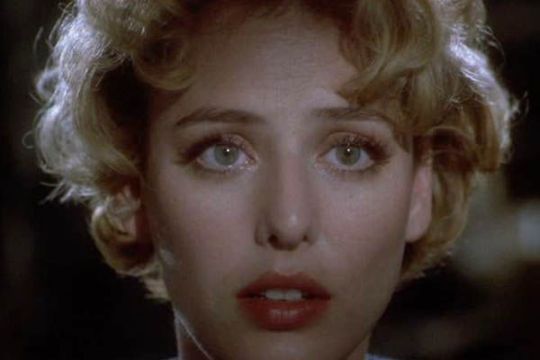



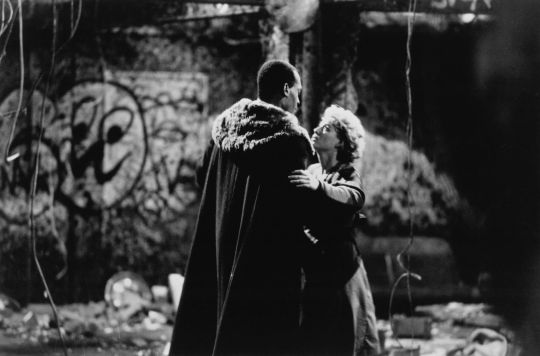
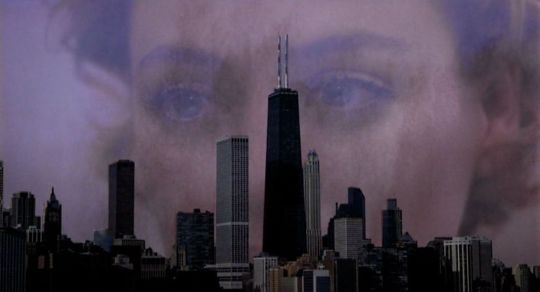


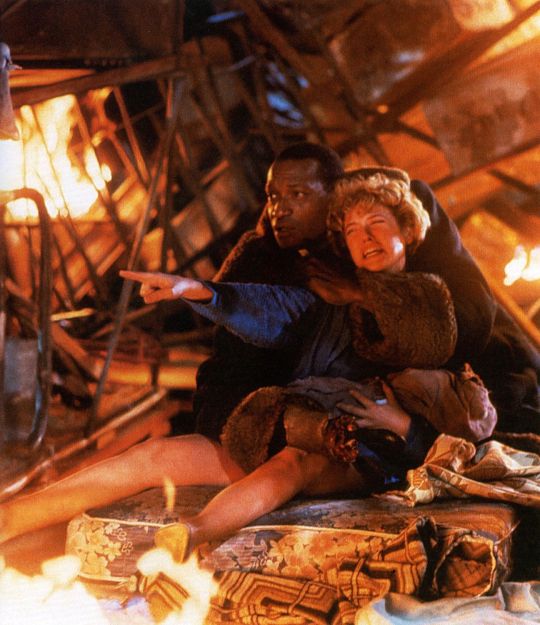
#candyman 1992#candyman#film classics#classics#films#horror films#Bernard rose#filmography#film series
8 notes
·
View notes
Text




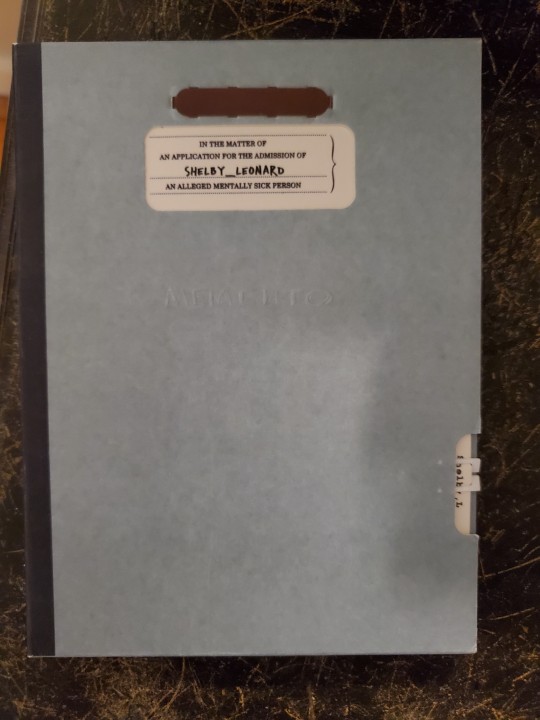


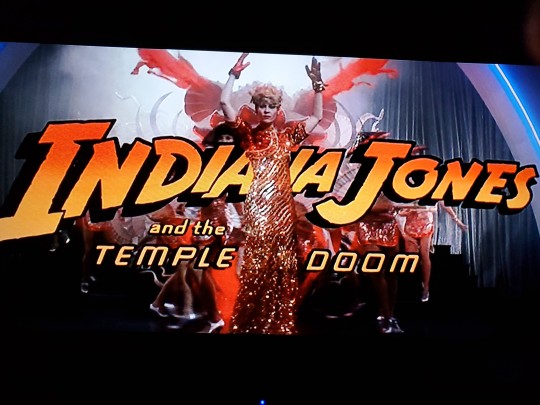
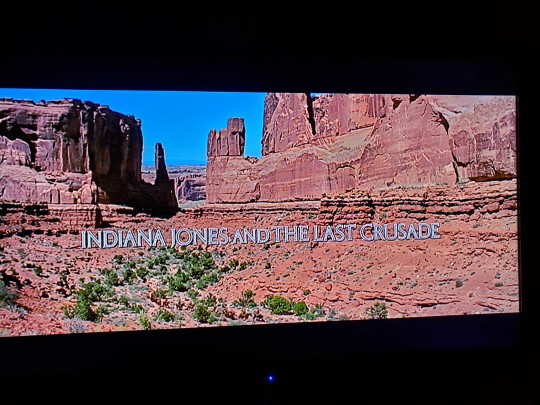
More DVD rewatches!
#indiana jones#raiders of the lost ark#temple of doom#the last crusade#mystery science theater 3000#memento#se7en#90s cinema#2000s#a scanner darkly#in the mouth of madness#sam neil#david fincher#christopher nolan#john carpenter#steven spielberg#george lucas#80s cinema#original trilogies#film series
7 notes
·
View notes
Text
Getting the main prop ready for a film series project I’m gonna be working on with some amazing people soon 😁🎬
It’ll be up on YouTube when it starts producing so let me know if you’re interested and I can post links and tag you when they come out 🖤
It’s taking a while lmao but I’m hand painting it all and stuff 🙃
21 notes
·
View notes
Text
Can superhero film series work?
This is not clickbait. At least, mostly not.
Overly Sarcastic Productions recently-ish released two videos about Superman. (The first is from July and is ~99 minutes long; the second is from Friday and is ~61 minutes long.) The second video is more relevant to this post; its thesis is, essentially, that superheroes need to rescue people instead of just fighting villains, a thesis I agree to with some caveats (not all of which were explicitly stated in the video, sadly).
A comment on that video got me to thinking about pacing and structure, and made me wonder whether superhero film series can work.
Now for the bit where I question whether my one-clause title was, in fact, clickbait.
Caveat #1: What's a superhero?
Not all "superheroes" need to fit in the model Red describes. Heroes in superhero media ranging from Dreadnought to Megamind to Hancock to One Punch Man to Worm are rarely seen rescuing people, and that works with how those sorts of stories conceptualize superheroes. But most superheroes aren't trying to be Worm, which is a good thing.
So for the purpose of this post, when I say "superhero" I mean "classic superheroes," who I categorize by that famed biologist's method. You'll see classic superheroes in the general memespace occupied by most big Marvel/DC heroes, The Incredibles, My Hero Academia('s main cast), Invincible*, Ben 10, Sentinels of the Multiverse, Spinnerette, that one terrible Disney movie most notable for a video essay about it, etc.
*Say what you will about Omni-Man, his son's trying to be Superman.
Caveat #2: What's a film series?
I'm focusing here on three related types of media—standalone movies, film series, and TV-style serials—because I think this problem only exists with one of them. (Which is, sadly, the dominant way superhero stories are being distributed these days.) For the purpose of this post:
Movies are single-installment narratives, generally 90-120 minutes in length, created without intending to follow them up with anything. The Incredibles are probably the clearest example, though plenty of pre-MCU superhero film trilogies started out this way. If I say "movie," I'm referring to standalone movies.
A film series is a bunch of movies meant to tie together, each with their own internal narrative, but also building into a larger narrative. Individual film series are released sporadically, months or years apart. By far the most obvious and successful example would be the MCU. For brevity, I'll use "film" to refer to this kind of film series.
A TV-style serial releases batches of much shorter episodes (usually 20-30 minutes each, sometimes 50-60 or some other length), sometimes all at once but more often weekly for a few months at a time. These batches are called "seasons," and usually last 10-15 or 20-30 episodes. Each episode has its own more or less self-contained plot, seasons usually have some kind of character and/or plot arc tying them together, and a series as a whole probably has something linking different seasons together beyond character names. This format was designed for TV, but these days lots of serials are produced for streaming platforms, and might not get any broadcast release. For brevity, I'm calling these "serials," even though that technically applies to film series and a bunch of other serial media.
TL;DR: The Incredibles is a movie, the MCU is films, Invincible is a serial.
I realize there's a lot of gray areas. The MCU includes a lot of serials in addition to the films, the DC universe has a bunch of loosely-linked animated movies, and I've mentioned more superhero stories with installments/versions in non-audiovisual mediums than ones which have only seen movies, films, and serials (as defined above).
But I'm not talking about all superhero stories, every way they can be structured, in every format. I'm talking about film series, and I'm using movies and serials as points of contrast.
Caveat #3: Let's not question OSP
To summarize OSP's thesis: Superheroes (as defined in caveat 1) need scenes where they save people from mundane peril to feel heroic. Superheroes are supposed to exist to save people, not just to fight villains.
If you disagree with these premises, if you think it's dumb for superpowered people to waste their time saving people from fires or industrial accidents or whatever, I'm not gonna argue. That's an argument about the philosophical nature of superheroism, which boils down to an argument over how "superhero" should be defined. I don't want to get involved in that kind of debate.
Instead: Starting with these caveats, let me get onto...
The Point
Story Structure
I'll be brief.
Stories have structure, and often recognizable structures. There are two big forces which drive stories to have the structures we recognize, or at least two I'll be discussing: The need for stories to tell a complete story, and time constraints.
Stories need to tell a complete story. The reason a lot of MCU knockoffs flopped as hard as they did is the amount of time they wasted on setups for future movies. MCU movies were reasonably restrained; each movie (or at least the movies I saw) did a pretty good job of telling a self-contained story, even as it built up to future movies. MCU knockoffs wanted to play catch-up, wanted to release their Avengers with as few introductory movies as possible.
But stories only have so much time to tell a story, and that time is very restricted in the mediums being analyzed here. Distributors don't really like movies and films more than 120-150 minutes long, because they either can't play as many times, require the theater to stay open longer, or both. And of course, serials have their episode lengths limited by broadcast schedules. In theory, streaming should give more runtime flexibility, but not many people have taken advantage of those possibilities so far.
In movies, the need to tell a complete story and the fairly strict runtime limitations have lead to a fairly strict structure known as the three-act formula; it's so ubiquitous that most films which try to avoid it end up reconstructing a form of the three-act structure, just to tell their whole story in one go.
Of course, films and serials operate on two different structural levels. Each film or episode needs to feel like a satisfying self-contained story, or at least a satisfying story fragment which went somewhere. An installment where it feels like nothing happened is often derisively called "padding" or "filler," because it is perceived to have added little to the series except runtime. You do not want your series to have filler if you can avoid it.
TL;DR: Every story, and every portion of a story released individually, needs to be structured in such a way that it tells its own story.
Where do we put the flood?
Consider the above point, and Caveat #3. Stories need to have structure, superheroes need to save people, and superhero stories only have so much time.
There's a well-established formula for movies. You put the disasters, petty crimes, and so forth late in act 1 or early in act 2, or maybe early in act 1 if your protagonist is an established superhero. This lets your hero earn their "superhero cred," and in the likely event that your protagonist isn't an established superhero, gives them a chance to establish themselves.
Movies don't need much. If you have around 100 minutes of movie, one 12-minute sequence where your hero discovers a burning building, finds people inside, and saves them is roughly an eighth of the movie. That's significant!
But that sequence won't cut it for a longer narrative. For a 12-episode serial with 22-minute episodes, the above sequence is less than 5% of the serial's runtime. Luckily, however, the serial structure makes it easy to work in multiple places where the superhero saves people, largely unrelated to the overarching seasonal plot.
You can have entire episodes focused on individual character conflicts, like the Hero and the Lancer having a pissing contest, or the Big Guy having a crisis of faith, or romantic bullshit, or whatever. At least some of these character-driven episodes should advance the overarching plot, but you can also have a couple which focus on more day-to-day heroism without losing too much—you just need the character conflict to go somewhere, and that can be the complete story you so desperately need.
Film series can't really do either.
The Problem with Superhero Film Series
Films are isolated in a way serial episodes aren't. It's easy to convince an audience to watch the first half of a two-part story if the second part is coming next week! It's hard to convince them to do the same if the parts are separated by a year. It worked for Infinity War/Endgame, but A. the end of Avengers: Infinity War was pretty definitive for a "part 1" and B. it's the culmination of a decade of genre-defining films.
And the year-long turnaround time is fairly short for film series. The MCU has been producing about three films per year, but I doubt anyone would argue that Avengers: Age of Ultron is the sequel to Guardians of the Galaxy just because they're next to each other in Wikipedia's list of MCU films. The sequel to Guardians of the Galaxy is Guardians of the Galaxy Volume 2, which released ~2.5 years later. 2-3 years seems like the typical game between releases within MCU sub-series, and the DCEU seems to have a similar rhythm.
Anyways, whether one year or three, each film has immense pressure to tell the best self-contained story it can. (Assuming the studio heads are applying sensible pressures and not trying to do an Any% Cinematic Universe Speedrun.) That means it's easy to replace "filler" scenes where your hero stops a bank robbery or rescues people from a...volcano or something (I'm running out of natural disasters) with something relevant to the plot of this story.
From the perspective of the individual film, this is a good thing! Spending a full sequence on, essentially, just reminding the audience that Superman is a superhero is a waste of your limited time. At the very least, you should tie that rescue into the plot somehow; maybe the bank robbers have information on the Big Bad, or the volcano is part of their evil scheme. It would probably be less contrived if you just throw out the rescue angle entirely, though.
From the perspective of the film series, this is a disaster! The net effect is that superheroes in these film series only rescue people from non-supervillain-related situations when they still need to earn "superhero cred," generally when they're fresh and inexperienced. This is exactly what Red meant when she said heroes "graduate" from saving people to fighting villains. Saving people stops being the point of superheroism, and instead becomes its final exam.
Maybe I'm being pessimistic, but I don't see a solution within the "film series" model. As long as film series are big individual segments, with each segment being released months or years after the last, those segments need to stand on their own. As long as films are being optimized for their standalone quality, there'll be incentives to cut the ordinary rescues from most films. As long as such incentives are there, superheroes will focus on the spectacular supervillain brawls at the expense of heroism.
In Summary
Stories are shaped by their structure, structures are shaped by medium and release format. Superhero stories these days are often lacking in "mundane" heroics like stopping muggers, rescuing trapped miners, and destroying meteors before they hit the Earth. In film series like the All-Consuming MCU, the release format discourages writers from including those scenes.
I'm obviously not saying superheroes can't work, or even that superhero movies can't work. Heck, even "superhero" film series can work, if they're not trying to be classical superheroes. But the MCU (and most other big-budget superhero films) are trying to be classical superheroes, and because they're film series, they're discouraged from letting their superheroes be heroes.
Now, this problem isn't unique to superhero films. The Teen Titans (2003) were more likely to frame their character-development episodes around petty one-shot supervillains (or fighting, say, Plasmus again) than rescuing people from a natural disaster. But on a fundamental level, nothing about Teen Titans (2003) would need to change if they fought fire instead of Fang.
I'm not sure there's any such solution for film series, without structuring them more like standalone movies or TV serials.
Postscript

Thank you, [NAME REDACTED], for inspiring me to write this.
12 notes
·
View notes
Photo



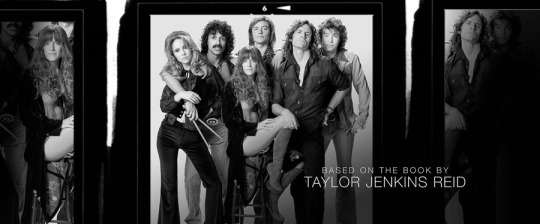

5 notes
·
View notes
Video
dolerme
7 notes
·
View notes
Text
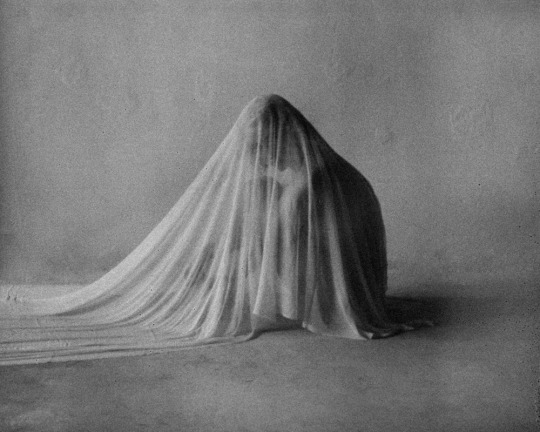
‘Archetype’ Twelve
24” x 30” photograph printed on 310gsm Hahnemuhle cotton rag paper. Signed, numbered ( 1 of 1 ), spray varnished.
Sold.
9 notes
·
View notes
Text
vimeo
As Flores de Rosalina (2022)
Summer tales in the countryside of Ferreiros, Portugal
A short by
Allison Acza
Philippe Teixcyr
7 notes
·
View notes
Text
Jon Shibata, film archivist at the Berkeley Art Musuem and Pacific Film Archive (BAMPFA), is the curator of the ongoing film series “Out of the Vault: Everything’s Ephemeral.” Jon was my first boss in an art museum. I worked with him while I was an art history student at UC Berkeley. He's an admirable and kind man. I hope his series gains full attendance!
5 notes
·
View notes
Text
Ben gitmedim
Yanlış!!
Sen hiç gelmedin.
~¡ncir reçeli~

¦)
8 notes
·
View notes
Text
On the set of Indiana Jones 5
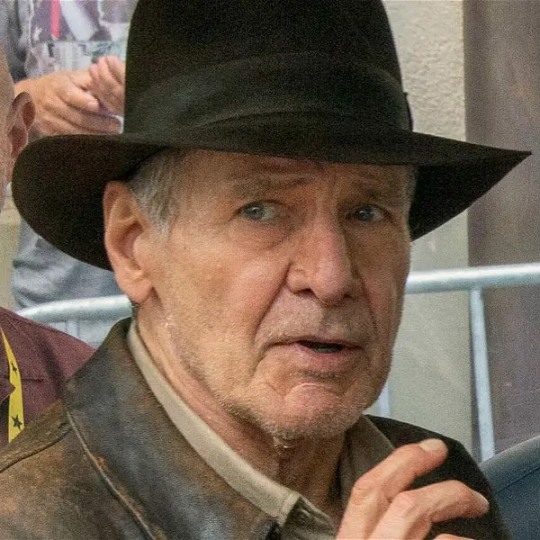

#indiana jones 5#indiana jones#indy#Harrison Ford#on the set#italy#James Mangold#adventure#action#fantasy#blockbuster#entertainment#franchise#indiana jones movies#Steven Spielberg#Frank Marshall#movie#film series#2021#2022#2023#Indiana Jones#cinema
4 notes
·
View notes
Text
May 26, 2022 is the last day of school.
Soon, I'll be writing my slenderverse arg.
5 notes
·
View notes